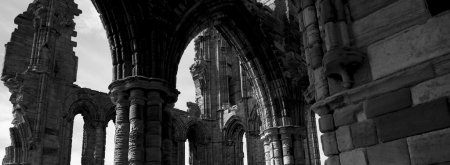Understanding the New Atheism
In Part 2 of this series, Dr. Douglas Groothuis explains and counters the new atheists' claim that the New Testament is historically unreliable.
The New Testament: Historically Untrustworthy?
Part of the new atheism's attack on religion and Christianity is not new at all – namely, its charge that the Bible is a collection of pre-scientific myths and legends. Beyond this, Richard Dawkins, Christopher Hitchens, Sam Harris and others claim that the Bible gives downright immoral advice and should, therefore, be utterly rejected. While a short article cannot adequately respond to all of their accusations, in this essay, I address the idea that the New Testament is historically unreliable.
The new atheists reject the New Testament as historically untrustworthy chiefly because of its antiquity and its miracle claims. However, in savaging the New Testament, these writers almost never engage the best conservative New Testament scholars.
For example, while Hitchens is quick to cite Bart Ehrman's criticisms, he is loath to cite the works of reputable scholars such as Craig Blomberg, Ben Witherington or N.T. Wright. In fact, Hitchens and company often repeat boilerplate criticisms given by Thomas Paine, H.L. Menken and other skeptics, without so much as considering recent defenses of the historicity of the New Testament.[1]
The standard practice of the ancient historian is to think through possible ways of reconciling seemingly conflicting passages, but Hitchens et al will have none of that. Harris, in his polemic, Letter to a Christian Nation, says that Matthew 27:9-10 mistakenly attributes a prophecy to Jeremiah when, in fact, it comes from Zechariah 11:12-13.[2] While much of the quote comes from Zechariah, the substance of the quote also refers to a theme in Jeremiah 19:1-13, which deals with apostasy. Rather than a clear error, Matthew makes a general reference to themes found most prominently in Jeremiah (although he cites Zechariah).[3]
Hard Historicity
The new atheists fail to note that the New Testament possesses credentials of historicity that put it in a category by itself with respect to ancient literature. First, it has been accurately transmitted over time through the copying of its documents. There are more than 5,000 complete or partial manuscripts of New Testament books available today in Greek, let alone other ancient manuscripts in Latin and other languages. The wealth and antiquity of the documents established the basic trustworthiness of their transmission. Portions of the New Testament that are textually uncertain – which are noted in the marginal notes of a good Bible – are rare; further, they bring into question no Christian doctrine.[4]
Second, the documents were written just a few decades after the events they describe by eyewitnesses or those who consulted eyewitnesses (see Luke 1:1-4; John 21:24; 1 John 1:1-3). It is very likely that the synoptic Gospels (Matthew, Mark, Luke) were written before AD 70. The Gospel of John was probably written about AD 90. The Epistles of Paul were written even earlier than the Gospels, probably from the late 40s to the early 60s. Contemporary readers may deem the gap between the writing of these documents and the events themselves as being too long, but this ignores two pertinent facts. Historians generally trust ancient documents that have far longer gaps. Moreover, Jewish teachers of that day taught in very memorable styles and their disciples were known for great feats of memorization. This was common in a largely oral culture (unlike our own). Therefore, a gap of several decades between the writing of a document and what it describes provides no reason to distrust it.[5]
These facts make the New Testament the most reliable document available concerning Jesus and the early church. Hitchens is quite wrong when he asserts that the Gnostic texts that speak of Jesus, which were found at Nag Hammadi, Egypt, "were of the same period and provenance as many of the subsequently canonical and 'authorized' Gospels".[6] These Gnostic texts date from the second and third centuries and present an entirely different worldview from that found in the New Testament.[7]
Third, although Dawkins and Hitchens question whether Jesus ever existed, this can be refuted simply by considering the documents outside of the New Testament that refer to Jesus' existence and message. Several historically credible sources corroborate some of the Gospel claims. The Jewish historian Josephus mentions Jesus twice in his Antiquities (AD 90-95), once in reference to James "the brother of Jesus who was called Christ",[8] and once in a longer and disputed passage. Some think that later Christian editors added some favorable theological material about Jesus.[9] Nevertheless, it can be plausibly argued that Josephus wrote that Jesus existed, was known as virtuous, was crucified, attracted many followers, worked wonders and was believed to be risen from the dead.[10] Several decades after Josephus, the Roman historians Tacitus, Thallus, Pliny the Younger and Suetonius also note the existence of Jesus, pertinent facts about His life and the beliefs of His followers.[11]
No God, No Miracles
The new atheists dismiss the miracles recorded in the New Testament because they have decided that there is no God to perform miracles. However, the miraculous is so intertwined with the Gospel accounts that there is virtually no history left if one tries to remove the miraculous.[12]
Attempts to demythologize the New Testament are highly speculative and based on an anti-supernatural prejudice that is not justified given (1) the prima facie historical reliability of the New Testament and (2) the evidence for a supernatural God's existence. As I argued in Part 1, there is good evidence from science that a creator, designer God exists.[13] If so, one cannot rule out a priori that miracles might occur and be accurately recorded. Moreover, the grand miracle of Christianity – Jesus' resurrection from the dead – was not a late addition to the message of the church, but its founding confession from the very beginning. As N.T. Wright says:
There is no evidence for a form of early Christianity in which the resurrection was not a central belief. Nor was this belief, as it were, bolted on to Christianity at the edge. It was the central driving force, informing the whole movement.[14]
The Reliability of Christ
While the new atheists wrongly reject the New Testament as unreliable, the figure that dominates these texts still lives and calls all people to Himself for new and unending life (Matthew 11:27- 28; John 3:16-18 and 14:6; 1 Timothy 2:5).
Notes
[1] Christopher Hitchens, God is Not Great (New York: Twelve Books, 2007). See p.110, for example.
[2] Sam Harris, Letter to a Christian Nation (New York: Knopp, 2006), p.58.
[3] To handle this and many other difficulties, see The Apologetics Study Bible, Ted Cabal, ed. (Nashville, Tenn.: Holman, 2007).
[4] Bart Ehrman has recently challenged this claim in Misquoting Jesus (New York: HarperOne, 2005). However, he radically overstates the case. See Timothy Paul Jones, Misquoting Truth (Downers Grove, Ill.: InterVarsity Press, 2007).
[5] See Craig L. Blomberg, The Historical Reliability of the Gospels, 2nd ed. (Downers Grove, Ill.: InterVarsity Press, 2007), pp.55-62.
[6] Hitchens, p.112.
[7] For more on the Gnostic documents, see Darrell Bock, The Missing Gospels (Nashville, Tenn.: Nelson Books, 2006).
[8] Josephus, Antiquities 20:9.
[9] Ibid., 18:3.
[10] See Robert E. Van Voorst, Jesus Outside the New Testament: An Introduction to Ancient Evidence (Grand Rapids, Mich.: Eerdmans, 2000), pp.81-104.
[11] Ibid., pp.19-53. On extra-biblical evidence for Jesus' existence, see also Murray Harris, Three Crucial Questions About Jesus (Grand Rapids, Mich.: Baker Books, 1994), chapter one, 'Did Jesus Exist?'.
[12] Francis A. Schaeffer, How Should We Then Live? (New York: Fleming H. Revel, 1976), pp.175-176. See also C.S. Lewis, 'Modern Theology and Biblical Criticism', in Christian Reflections, ed. Walter Hooper (Grand Rapids, Mich.: Eerdmans, 1967), pp.152-166.
[13] See Lee Strobel, The Case for a Creator (Grand Rapids, Mich.: Zondervan, 2004).
[14] N.T. Wright, The Challenge of Jesus (Downers Grove, Ill.: InterVarsity Press, 1999), p.133.
© 2005 Douglas Groothuis
All rights reserved. International copyright secured.



